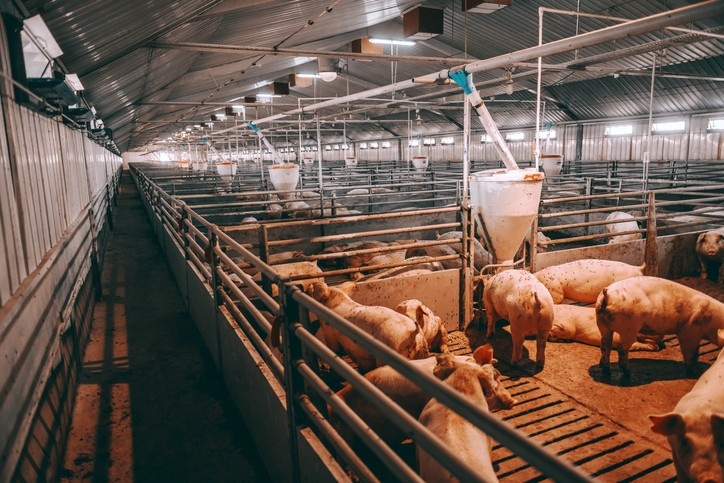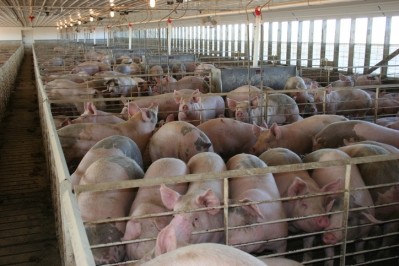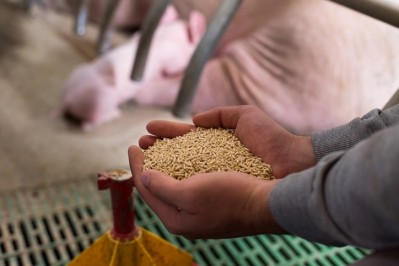Precision feeding could reduce nutrient excretion in growing pigs, benefit sow production

Precision feeding might also be a relevant strategy for sows, said the reviewers, all based at the National Research Institute for Agriculture, Food and Environment (INRAE) in France.
Their paper, published online in Animal Feed Science and Technology this month, was supported by the EU Horizon 2020 research project, Feed-a-Gene.
Currently, noted the team, most fattening pigs are group-housed and fed based on the average pig requirements of the room or the pen (Whittemore, 2006). Consequently, some pigs are overfed and others are underfed.
Sows are usually fed two diets, one restrictively during gestation and the other nearly ad libitum during lactation (Solà-Oriol and Gasa, 2017); both based on an average sow’s requirements, they said.
“The goal of precision feeding is to develop systems that estimate and deliver, at the right time, a ration with a quantity and composition adapted to the requirements of each animal. The challenges in these systems reside in estimating individual requirements and distributing different diets to animals in the same group.”
Precision feeding aims to improve characterization of individuals - feed intake, growth potential, body condition, physical activity, and health - or to support small groups to better adapt to the quantity, quality and timing of feed supplied to them, said the reviewers.
The approach also aims to improve efficiency by reducing farm costs, reducing excretion, and monitoring quality, they said.
“Applying precision feeding and doing so accurately requires assessing the nutritional potential of feed ingredients and nutrient requirements of each animal to formulate balanced diets accurately to minimize nutrient deficiency or excess (Pomar et al., 2009).”
Environmental performance
The results of previous precision feeding assessments are promising, said the reviewers.
For growing-finishing pigs, compared to a classic three-phase group-feeding strategy, adjusting feed composition daily based on the performance of an average animal in the group decreased N excretion by 12% without influencing growth (Pomar et al., 2007), they reported.
“This continual adjustment also has an economic advantage because it can be based on a mixture of two feeds, one with a high nutrient content and one with a lower nutrient content.
“At the individual scale, precision feeding of growing-finishing pigs further reduces N and P excretions compared to a multiphase group-feeding strategy (respectively, 38 vs. 42 g/d for N, and 5 vs. 6 g/d for P) (Andretta et al., 2014).”
Simulations indicate that precision feeding could also be beneficial for sows, said the researchers.
“Using a multiphase feeding strategy (a mixture of two feeds) during gestation reduced the quantity of lysine ingested (-17%), N excretion (-19%), and feed cost (-8%) (Dourmad et al., 2015).
“These results for sows need to be confirmed with trials in experimental farms.”
Measuring devices
On-farm application of precision feeding requires designing and developing measuring devices - for intake, BW - calculation methods and a feeding system that provides the required amount of feed with a composition that optimizes animal performance while minimizing the use of farm resources, they said.
“Selecting the appropriate form of feed and the appropriate nutrient density and supply, as well as reducing negative effects of environmental factors should improve FCR. New feeding technologies such as sensors, and feeders, would allow group-housed animals to be fed based on their individual requirements, which improves group efficiency.
“Predictive models of nutrient requirements and excretion, such as InraPorc, have been developed and used to select the best feeding strategies,” they added.
Source: Animal Feed Science and Technology
DOI: https://doi.org/10.1016/j.anifeedsci.2020.114611
Title: Improvement of feed and nutrient efficiency in pig production through precision feeding
Authors: C Gaillard, L Brossard, J-Y Dourmad














